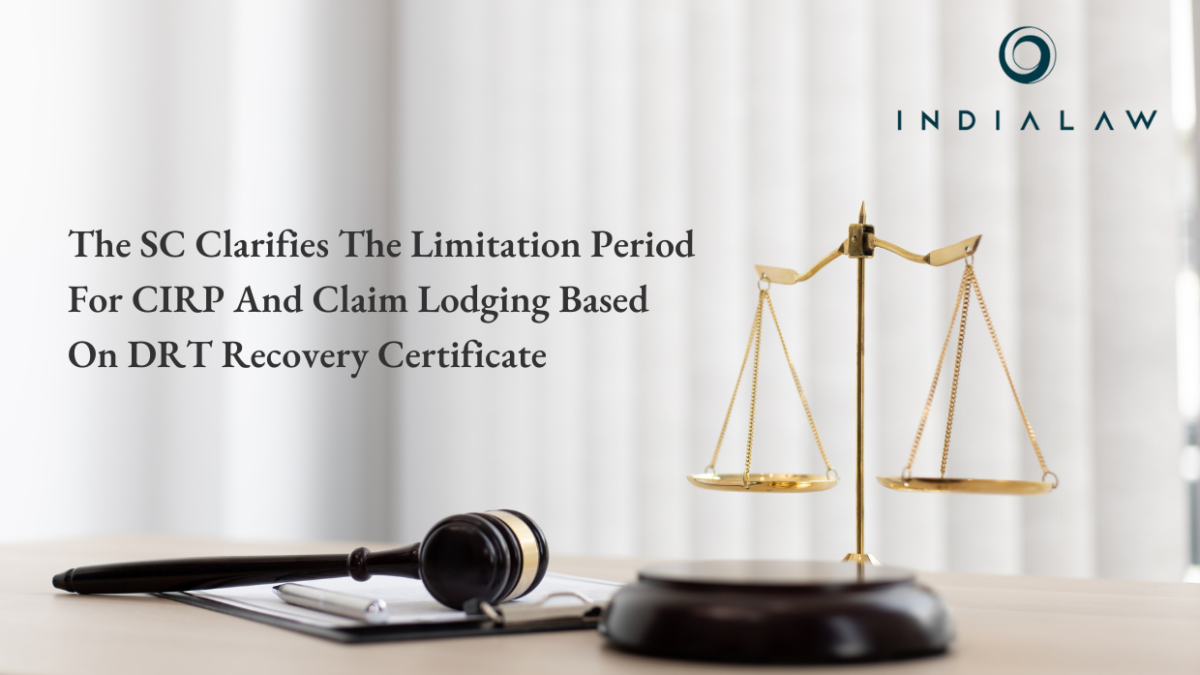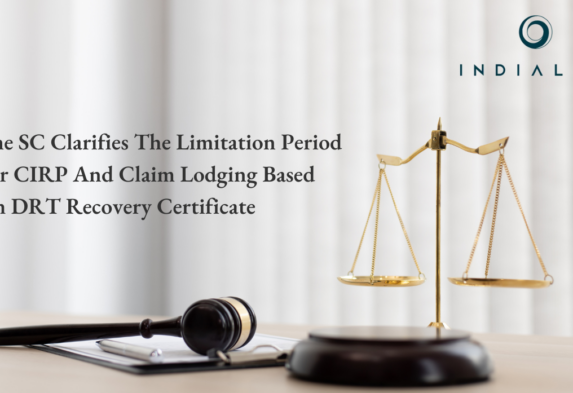The SC Clarifies The Limitation Period For The Purposes Of Initiating CIRP And Lodging Claim During CIRP On The Basis Of A DRT Recovery Certificate As Financial Debt.


The Hon’ble Supreme Court (SC) in the case of Tottempudi Salalith Vs. State Bank of India & Ors.[1] has affirmed its previous judgments and held that a DRT Recovery Certificate holder shall have, from the date of the Recovery Certificate, three years to initiate CIRP proceedings and twelve years to lodge a claim in CIRP, if pursued as a deemed decree.
Facts:
The Appellant was the managing director of the Corporate Debtor/ Respondent No.2, Totem Infrastructures Limited. The Corporate Debtor defaulted on loans/facilities extended by several banks. Therefore, the exposed Lenders issued a notice under Section 13(2) of the Securitisation and Reconstruction of Financial Assets and Enforcement Security (SARFESI) and later initiated recovery proceedings against the Corporate Debtor before the Debt Recovery Tribunal (DRT). Accordingly, three recovery certificates were issued in favour of the Lenders by the DRT on 08.09.2015, 04.08.2017 and 17.10.2017, respectively.
On the basis of the aforesaid three recovery certificated, State Bank of India (SBI), i.e., Respondent No.1, filed an application under Section 7 of Insolvency and Bankruptcy Code, 2016 (IBC) on 05.09.2019. The Corporate Debtor had issued a letter to the Union Bank and SBI, agreeing in principle to repay the amount due to the Financial Creditors. The NCLT considered this as acknowledgement of debt and subsequently passed an Order dated 12.01.2021 admitting SBI’s CIRP application.
The Appellant challenged the NCLT’s admission order in the NCLAT. The NCLAT broadly agreed with the reasoning of the NCLT and sustained its judgment by treating the Corporate Debtor’s letter dated 29.01.2020 as an acknowledgement of debt and computed the limitation period based on the date of this letter.
The Appellant’s Contention
- Pursuant to Section 18 of the Limitation Act, 1963, any acknowledgment beyond the period of limitation would not revive the right to sue.
- Section 238A of the I&B Code itself stipulates the application of the statute of Limitation on the I&B Code
- The date of default should go back to the date on which the loan account of the corporate debtor was declared a non-performing asset.
- Banks, having approached the DRT, were barred under the doctrine of election from approaching the NCLT for recovery of same set of debts.
Decision of the SC:
When deciding on the Appellants 1st and 2nd contention, the SC referred to the case of Kotak Mahindra Bank Limited vs. A Balakrishnan and Another[2] (Kotak-I), where the financial creditor would be entitled to initiate CIRP within a period of three-years form the date of issuance if the recovery certificate issued by DRT. Accordingly, the SC observed that the NCLAT’s reasoning behind the judgment was procedurally wrong as the Corporate Debtor’s letter dated 29.01.2020 was issued after the Section 7 Petition had been filed. Therefore, in the absence of amendment of pleadings, the NCLAT could not have taken such purported acknowledgment of debt for the purpose of extending the limitation period. The Court further discussed that in accordance with the decisions in B. K. Educational Services Private Limited vs. Parag Gupta & Associates[3] and Babulal Vardharji Gurjar vs. Veer Gurjar Aluminium Industries Private Limited and Another[4]¸ the date of default shall be the date on which the limitation period starts ticking.
When deciding on Appellant’s 3rd contentions, the SC referred to the case of Vashdeo R Bhojwani Vs. Abhyudaya Co-operative Bank Ltd & Anr[5] where the date of recovery certificate was treated to be the date on which the time of limitation began to tick.
When discussing the 4th Contention of the Appellant, the SC stated that the doctrine of election bars prosecution of the same right in two different fora based on the same cause of action. But so far as the present appeal is concerned, the recovery proceedings before the DRT had commenced in the year 2014. At that point of time, the IBC had not come into existence. Moreover, in Kotak-I it was held that the recovery certificate itself would give rise to a fresh cause of action to the Financial Creditor. The question of election between the fora for enforcement of debt under the 1993 Act and initiation of CIRP under the IBC arises only after a recovery certificate is issued. The doctrine of election cannot be applied to prevent the financial creditors from approaching the NCLT for initiation of CIRP.
The SC concluded that what has been filed before the NCLT is a composite application based on three recovery certificates, two of which have been passed in 2017 and within the three-year period as postulated in Article 137 of the Limitation Act and therefore the Section 7 petition relating to these certificates is maintainable.
When discussing the question relating to the third recovery certificate issued in the year 2015, the SC observed that a recovery certificate under the Recovery of Debts and Bankruptcy Act, 1993 is also clothed with the character of a deemed decree as per the provisions of Section 19 (22A) of the 1993 Act and life of a decree as per Article 136 of the schedule of Limitation Act is twelve years for enforcement. Therefore, in light of the judgment of Kotak-I and Kotak Mahindra Bank Vs Kew Precision Parts[6] it was the SC’s opinion that, in the event a financial creditor wants to pursue a recovery certificate as a deemed decree, he would get twelve years’ time to lodge a claim in IBC proceedings. However, the legality of the 2015 certificate as a deemed decree was not examined by the Adjudicating Authority or the Appellate Tribunal, therefore, the SC opined that this question ought to be referred back to the NCLAT for adjudication.
The Appeal was dismissed pursuant to the above observations.
[1] Judgement dated 18th October 2023
[2] (2022) 9 SCC 186
[3] (2019) 11 SCC 633
[4] (2020) 15 SCC 1
[5] (2019) 9 SCC 158
[6] (2022) 9 SCC 364




